Disclosure: Thank you for reading our articles! Some links may be affiliate links. We may get paid if you buy something or take an action after clicking one of these links. Additionally, as an Amazon Associate, I earn from qualifying purchases.
Here at BossOyster.com, we know a thing or two about oyster-eating!
While eating raw oysters is often the most common way that people choose to enjoy this delicacy, there are a lot of other ways that oysters can be eaten, that will leave you salivating for more!
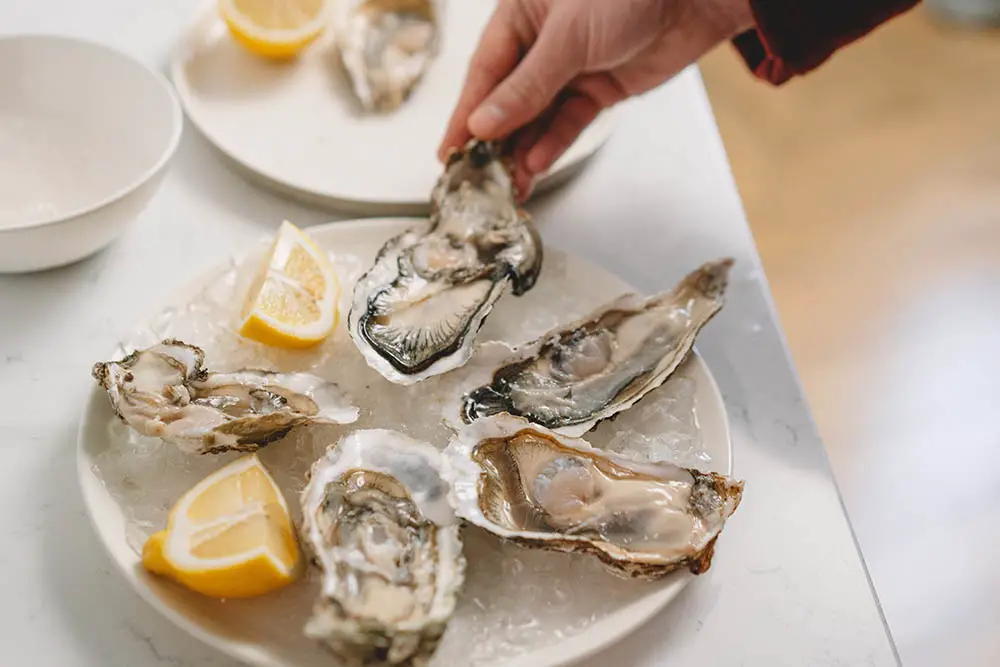
Though southern fried oysters are usually a delicious go-to for backyard cookouts and weeknight treats, grilled oysters Rockefeller is often the choice for oyster-lovers who have a more developed taste palate.
As we delve a little deeper into the different ways oysters can be eaten, we’re sure you’ll come to see that, when it comes to oyster eating, there’s no one way to do it.
On the contrary, this shelled delicacy can be prepped and cooked in a variety of different ways, not to mention tasting differently depending on where in the world you might be.
We love all types of seafood here at Boss Oysters, but oysters are at the very top of our list.
To help you get started in your oyster-eating journey, we’re going to be going over everything you need to know when it comes to eating oysters, including how to steam oysters, what garnishes to use, as well as how to shuck and slurp them, of course!
So, whether you’ve always wanted to taste an oyster, or you’ve been eating them for years and have always wondered whether or not you’re eating them correctly - relax!
Though there’s no ”right way” to eat an oyster, there are some general etiquette tips that you can follow to make sure that you don’t embarrass yourself at a fancy restaurant! Let’s delve a little deeper:
Top Tips for Eating Oysters
If you’re just dipping your toes into the world of oysters, then it’s worth pointing out here that there are a lot of ways to eat oysters, as well as a lot of oysters to choose from!
From butter-baked oysters at your local seafood bar to canned smoked oysters that can be bought for a fraction of what they would at a restaurant, oysters can be enjoyed by everyone, regardless of location or budget.
Let’s start with the basics, though. If you’ve never tried oysters before and would like a recommendation, we suggest going for a West Coast oyster.
Unlike other kinds that hail from other regions, these types of oysters are very sweet to the taste, which makes them ideal for those who do not yet have a developed oyster palate.
However, if you want to dive in at the deep end, you could always consider stopping by at an oyster bar, where you will have the opportunity to try out a range of different types of oysters in one sitting.
Are you the type that prefers buttery-sweet flavored oysters? Or is salty oyster meat more your thing?
By taking the time to figure out what you like, you will have a better understanding of your palate and, in turn, will know what type of oysters to look for.
This will also allow you to learn more about whether you prefer to eat oysters raw or prepared into a dish. With all that being said, let’s take a look at some of the most important things to consider prior to eating oysters:
Which Type of Oyster Do You Want?
From salty blue point oysters to delicately earthy Olympia oysters, there are different types of oysters for different types of taste preferences.
What’s more, depending on what you like, you can even choose to enjoy them baked, grilled, boiled, or even directly from the shell after shucking them.
Here are the five most commonly eaten species of oyster in the Western world:
- Pacific oyster
- Kumamoto
- Bluepoint
- Belon
- Olympia
Besides species, the origin of where the oyster has come from will also play a very big role in the overall taste, as well as their texture.
In addition to this, the taste and texture of an oyster can also vary depending on which season they were harvested.
With so many options to choose from, it can be pretty easy to get overwhelmed about which types of oysters are the best, or which will be the most appropriate for the types of dishes that you like to prepare while at home.
No matter what your oyster-eating experience may be, knowing what type of oyster you have to choose from will help you make the most of your dining adventure.
What Portion Size do You Want?
If you want oysters that are on the larger side, then we recommend going for pacific or Kumamoto oysters.
Not only are these oysters bigger in size than other types and have more meat, but these particular oysters have a buttery and creamy taste that is ideal for all types of oyster-lovers.
These types of oyster species are more often than not farmed and harvested along the West Coast, but they can also be farmed on the Pacific coast, too.
Generally speaking, though, most raw oyster bars across the US will sell these species, though they are can sometimes be harvested before they reach their full size.
Speaking of the West Coast, no one does oysters quite like Antoine’s located in New Orleans - they even invented the famous Rockefeller oyster!
Do You Have the Right Utensils?
In addition to all of that, you’ll also need to make sure that you have the correct utensils to eat your oysters - whether that be at home or the restaurant.
The most commonly used utensil is something known as an “Oyster Fork'' which is a small utensil that is made of three short and wide tines.
These times are used to loosen up the contents of the shells, as well as remove all of the parts that are inedible without getting your fingers dirty.
Though it is smaller in size than a normal eating fork, it is larger in width as each tine is made to serve a slightly different purpose.
The left tine is the widest of all and is used to assist in the cutting of the membrane that connects the oyster to the shell, while the other two are intended to simply help loosen up the oyster from the shell.
Though this won’t matter so much if you are eating at home, if you are planning on visiting a local fine dining restaurant, then you will need to follow this formal customary eating code.
Another thing to learn as a beginner is how to correctly open oysters, and this is something that you will need to do before you can use your oyster fork to gently remove the membrane from the shell.
There are a variety of ways that an oyster shell can be opened up, although the most common by far is to open them using something known as a “Shucking Knife”.
The shucking knife is a utensil that is used to help pry the oyster shell open.
If you’re unsure of how to use it or would like some guidance, we recommend checking out some tutorial videos online or even asking a waiter to show you if you are visiting a restaurant.
Similarly, another easy way by steaming oysters until the shells open. This is able to gently open the oysters all at once and is the least messy way to do it.
Have You Put Safety First?
As soon as you have an idea of what type of oysters you like, you’ll then be able to start purchasing oysters to cook at home.
However, please keep in mind that you should never purchase fresh oysters that have been opened up.
It’s important to remember that oysters are living muscles - which means that they need to eat.
For this reason, oysters are able to survive by constantly drawing in small amounts of the water it is submerged in, and that also includes viruses and bacteria.
This can then lead those viruses and bacteria to become saturated within the oyster’s body, and can then infect the person who consumes it.
One of the main infections that people can get from eating raw oysters is a type of bacteria that is known as Vibrio. This bacteria is a naturally occurring bacteria that is found in all coastal waters where oysters grow and reside.
The name of this infection is known as vibriosis which is characterized by the main symptoms of nausea, high temperatures, and sickness.
Interestingly, people can also catch vibriosis if they have gone swimming in salt or brackish water that contains the bacteria, and either swallowing the water accidentally or exposing an open wound to it.
More often than not, waters that contain Vibrio are found in open waters where the river meets the sea.
Though oysters that contain this harmful bacteria can sometimes be detected by smell and appearance, this isn’t always the case, which is why it’s so important to ensure that if you are going to purchase oysters yourself, you ensure that they are closed.
In addition, you should also try to make sure that you have purchased your oysters from a reputable source (such as Crab Place ) where you can have the peace of mind that the oysters sold have undergone a careful harvesting process.
On the flip side, you should also avoid eating oysters that have already been opened at restaurants, unless you are positive that you are eating from a reputable seafood chain.
What Are the Best Sauces To Eat Oysters With?
Whether you want to add a little something extra to your plain oysters, or you’d like to begin hosting dinner parties for friends and want to make the experience truly special, pairing sauces with your favorite oysters is a quick and easy way to elevate their flavor profile.
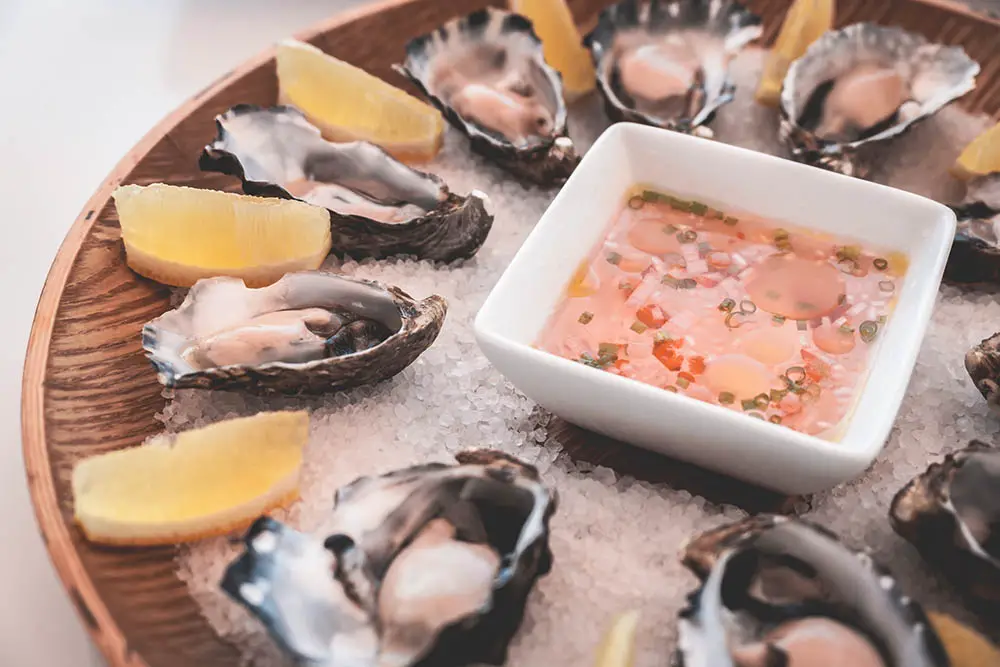
Here are some popular sauces and garnish suggestions:
Lemon Juice
Deemed by many to be the best way to enhance an oyster’s flavor, lemon juice is the choice of many oyster purists who want to let the flavor of their oysters shine.
A simple drop or two of lemon will allow you to enjoy all of the oyster’s flavor with a subtle zest that won’t take away from the full flavor profile of the oysters.
Hot Sauce
Another all time favorite topping for oysters (especially by those in the oyster capital of the world New Orleans!), cayenne pepper hot sauce provides a spicy kick for any oysters. One of the best happy hours someone can have are a cold beer, oysters with hot sauce, and live music to boot!
Mignonette Sauce
Though the name might sound expensive and fancy, mignonette sauce is super easy to make and requires ingredients that you likely already have in your kitchen cupboard.
This French sauce is traditionally served with raw oysters and is characterized by its cracked pepper, shallots, and white/red wine flavor.
It’s a wonderful choice for people who are new to the world of oysters and are not used to the texture of oysters.
Pesto Sauce
If you’re surprised to see pesto sauce appear on this list, rest assured that you’re not alone!
Many people overlook pesto sauce when it comes to oysters, but it has an earthy, rich flavor profile that pairs excellently with oysters.
Cocktail Sauce
Cocktail sauce is one of the most traditional seafood sauce toppings.
Keep in mind, though many people that love oysters find that cocktail sauce entirely overpowers the flavor profile of the oysters.
For this reason, it’s a popular choice for people who are just starting out eating oysters, and have not yet developed their taste palate and want to take things slow.
Serrano Chile Lime Sauce
If you’d like a sauce that’s going to give a kick, then serrano chile-lime sauce is just the ticket. This sauce is very easy to make, just mix a finely minced serrano chile with 2 tablespoons of lime juice and red wine vinegar.
Then, add a little salt and some chopped cilantro, and you’ll have yourself a fiery sauce ready to be paired with your oysters.
As a side note, regardless of whether you’re planning on entertaining guests or you simply want to treat yourself to a weekday oyster dish, the addition of sauces can make everything get messy - fast! Consider serving your chosen garnish or sauce in a side dish bowl, especially if the presentation is important to you.
How Do You Eat Oysters From a Jar?
Contrary to what you might have been told, oysters don’t have to be saved for special occasions, you also don’t need to head to the fanciest restaurants in order to enjoy them, either!
Believe it or not, oysters have been a favorite among the gentry and the working classes for centuries, there are even aficionados of vintage oysters.
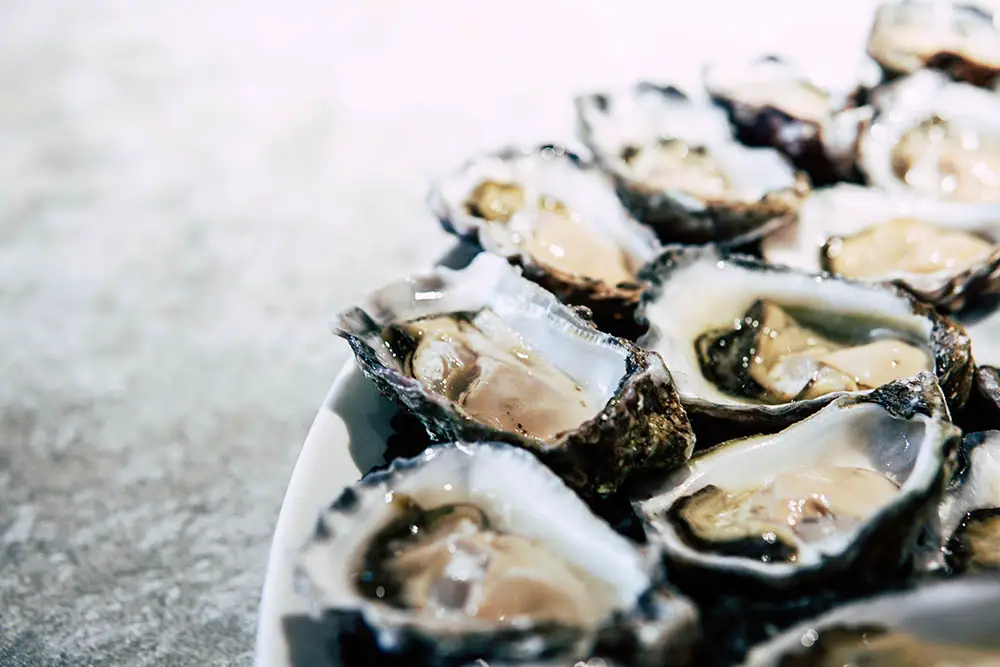
In case you are curious how long do oysters live, some of the most expensive breeds have been dated at over 20 years old! Of course, fried oysters are typically made from more affordable breeds, but that doesn’t make them any less delicious.
If you’re planning on eating your oysters from a jar, then it’s important to keep in mind that both canned and jar oysters must always be cooked before you eat them.
If you’re planning on purchasing fresh oysters from a supplier (rather than visiting your local seafood restaurant), chances are that the oysters you purchase are going to come stored inside a jar, just like these shucked oysters.
When you get them home and are ready to start eating them, there are a variety of ways that you can enjoy them!
To get you started, we’re going to be talking you through two popular ways that you can eat oysters from a jar: raw and deep-friend.
As oysters that come in a jar are almost always fresh, you have the option of eating them raw. If you’re a beginner and are unsure of how to open an oyster to eat, follow these steps below to make sure you do it correctly:
- Take an oyster out of the jar.
- Hold the oyster with the “cup” shaped part of the oyster directly pointing downwards, towards the floor (if done correctly, the pointed part of the oyster will be facing up towards you).
- With a knife, gently insert it into the sealed area between the cup and lid of the oyster, as this will help to loosen it up.
- If this does not work, try wiggling the knife back and forth a few times until you are able to get access to the inside of the oyster. While wiggling and twisting the knife, be extra careful to not apply too much pressure as it may cause parts of the shell to break away and make a mess on the floor.
- Once the blade of the knife has successfully gone into the inner part of the oyster, carefully slide the knife down towards the hinge of the oyster, and then cut it off.
- As soon as you have cut the hinge off, the oyster will then automatically open, and you can enjoy it.
As a side note, as the oysters are fresh, when they arrive in the jar container you will have around two weeks to eat them before they go bad. Many people that purchase shucked oysters choose to eat them deep-fried, which is a super popular dish. Follow the steps below to make it:
What You’ll Need:
- Shucked oysters
- Sea salt
- Canola oil
- All-purpose flour
- Cornmeal
- Clean your oysters and place them in a big bowl.
- Fill the bowl with cold water.
- Shake in a little cornmeal and allow the oysters to purify themselves of sand, dirt, and debris for a few hours.
- After this process is done, rinse the oysters and then shuck them.
- Coat the oysters with flour, then refrigerate for around 20 minutes.
- While the oysters are cooling, heat your canola oil to 350 degrees Fahrenheit.
- Take the oysters out of the refrigerator and fry until crispy.
- Place the deep-fried oysters on a plate and garnish with your sauce/toppings of choice.
- Enjoy.
If you want to try out some more quick and simple recipes that will make oyster cooking a breeze, we recommend picking up a cookbook that will be able to guide you through the cooking process.
Additionally, many oyster-lovers love to get creative and make their own recipes and then record them in their very own recipe book so they don’t forget a step - which might be something of use to you as you become more experienced with oysters.
How Do You Eat Oysters in a Can?
Canned oysters aren’t too different from oysters that come in a jar, the only difference is that canned oysters are generally preserved to last for longer periods of time, and are targeted towards people who live in an area where fresh oysters aren’t overly available.
Additionally, canned oysters are usually placed at a lower price point than other types of oysters, which makes them an ideal choice for oyster-lovers that want to enjoy their favorite seafood dishes without breaking the bank.
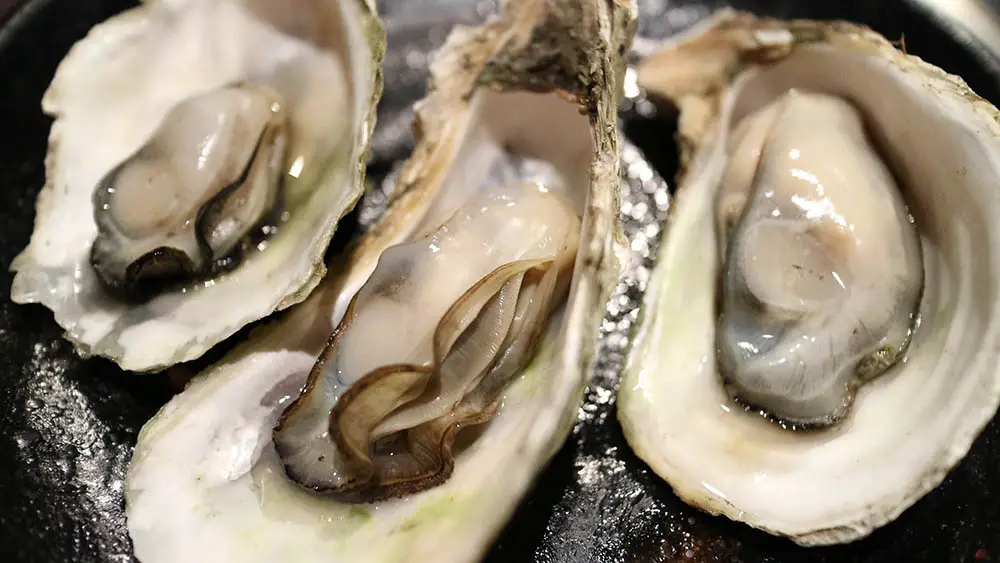
If you live in an area where fresh oysters aren’t readily available, then the next best thing you can do is eat canned or jar oysters.
Canned oysters are just as good as fresh oysters, and are packed full of nutrients and vitamins including B12, selenium, zinc, and many others.
In addition to this, canned oysters contain the same low calorie and carb levels as fresh oysters, so they’re just as healthy.
Although, just like fresh oysters, canned oysters can also have very high levels of sodium, so it’s best to consume them in moderation, which brings us to the question: “How do you eat canned oysters?”.
Before we answer that question, first we’re going to talk you through some helpful information regarding canned oysters, as they can differ from brand to brand.
Whether you prefer smoked oysters or boiled, more often than not, canned oysters are submerged in an oil that is able to preserve them and extend their shelf life.
Don’t worry too much, though, because the oil that is typically used to preserve canned oysters is usually very low in fat.
The most common type of oil used to preserve canned oysters is olive oil, which is packed full to the brim with antioxidants and other nutrients that can help to reduce LDL cholesterol, which is one of the main causes of heart disease.
Once you have purchased your canned oysters, they will last you for quite a long time, and can even be used in small portions for different dishes.
Depending on what type of oysters you have purchased, canned oysters can vary in shelf life. However, in general, most canned oysters are able to last for up to one year from the date of purchase.
Although, once you have opened the canned oysters, it is best if you refrigerate them so that the remaining oysters do not spoil.
Keep in mind that though your oysters will last for up to 1-year unopened, once you have opened them, if you have any oysters left over, you will have around 1 week to eat them before they go bad.
Additionally, you can choose to store leftover canned oysters in either a plastic Tupperware container, and some people like to also add the oil from the can.
In contrast, if you have any leftover canned oysters that you want to preserve for a longer amount of time, then you will also have the option of freezing them in the same way you would leftover raw oysters.
Similar to refrigeration, most people choose to transfer the leftover oysters from the can to a plastic container (make sure it is freezer-friendly) including the oil.
Once frozen, the oysters can be kept for around 6 months, although some people do find that they can keep them for longer.
Most Popular Ways To Eat Canned Oysters:
When it comes to eating canned oysters, the possibilities are truly endless.
Canned oysters are delicious when added to a dip (such as cream cheese and chives) or could even be baked into a hearty pie for all the family to enjoy.
On top of that, you could even choose to mix your canned oysters into some pasta or even add them to a caesar salad. If you wanted, you could even eat them straight out of the can!
Additionally, if you would like to try out some recipes that incorporate canned oysters, why not consider picking up a recipe book?
How Do You Eat Oysters on a Half Shell?
To serve an oyster on the half shell essentially means to use one of the two halves of the oyster shell as a little dish.
To eat them on the half shell, first, you will need to prepare them. Wash your oysters with cold running water so that all sand and dirt have been removed.
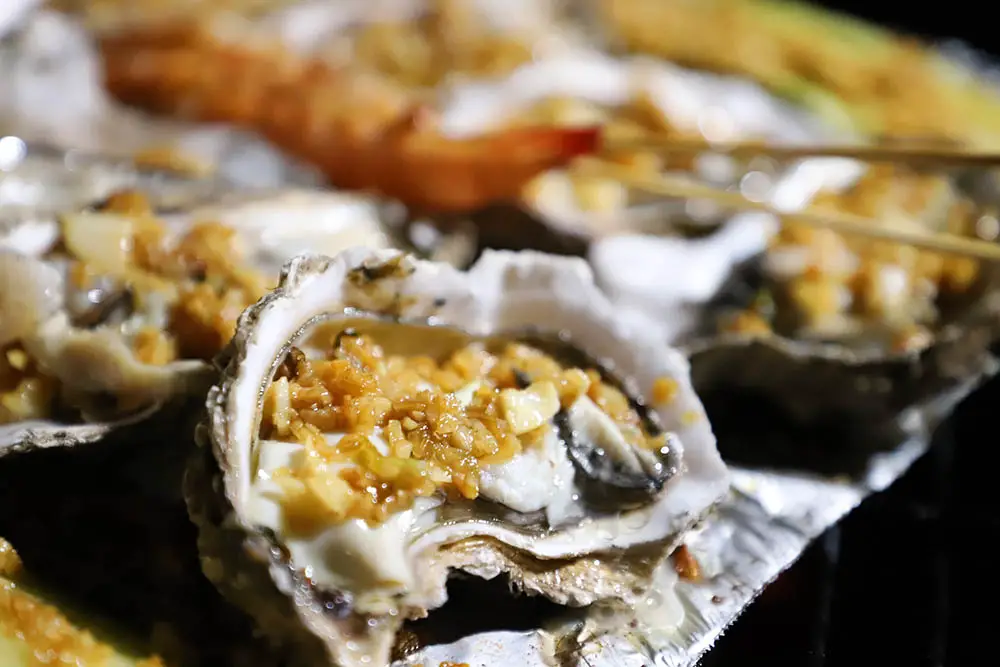
Then, place the oysters in ice for an hour so that they will be served chilled, and to complete the purifying process.
Take the oysters in one hand and hold the cup-side down. Insert your oyster knife into the hinge and gently wiggle back and forth until it opens up.
Twist the blade when you feel the point go in so that you are able to run the blade over the meat to cut the muscle.
Then, to serve, gently cut just under the oyster meat in order to release it from the bottom of the shell and discard the top shell, being careful not to tip too much of the liquid out.
From here, you will now have oysters on the half shell and can finish by sprinkling each oyster with your garnish of choice.
How Do You Eat Oysters in a Restaurant?
Regardless of whether you’re hitting the famous Captain Tom’s Oyster Bar in Houston, or you’re hitting Dee’s Hang Out for half-shell oysters in Panama City Beach, oysters are a dish that can be enjoyed all year round!
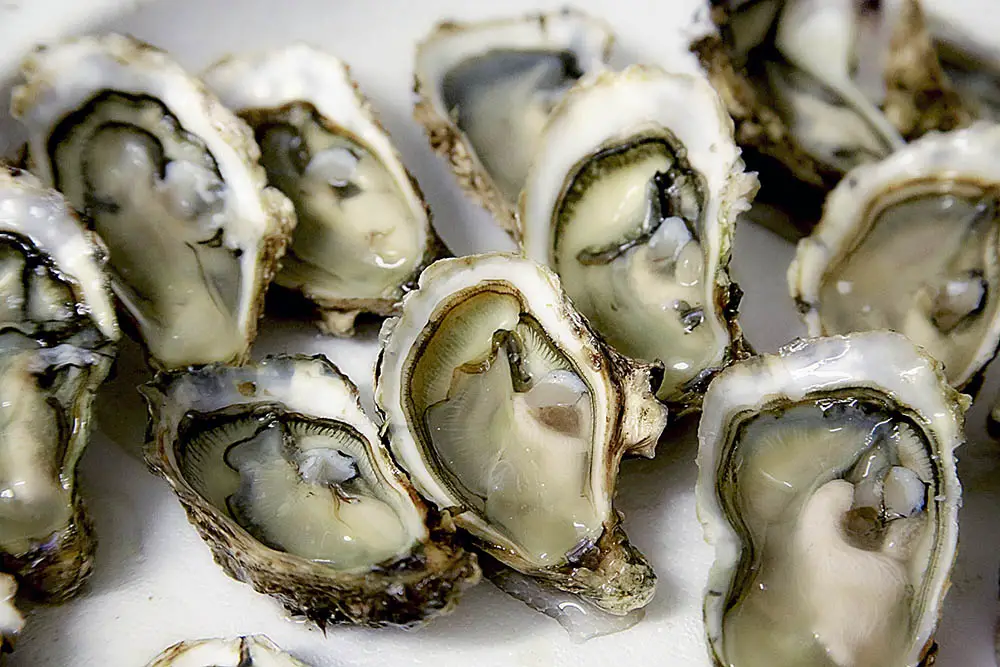
Despite dated claims that oysters should only ever be eaten in the months that contain the letter “r” (which works out from September through to April), this isn’t exactly true anymore.
This is because oyster farmers have more advanced technologies that allow them to harvest oysters while being able to better monitor bacteria levels, as well as the introduction of cold water oyster farms.
Thanks to these advancements, oysters can be enjoyed all year long, so there’s nothing stopping you from heading out to a swanky restaurant and ordering them off the menu.
Check out the following tips to make sure that you eat your oysters like a pro:
Make Sure the Oysters Are Fresh
Regardless of whether you’re at a local seafood spot or you’re hitting the swankiest oyster bar in town, before you even think about eating your oysters, you should first ensure that you know their origin.
It is a legal requirement that all types of shellfish (including oysters) are labeled with the region they have been farmed, as well as the day on which they were harvested.
Besides doing that, we also recommend taking a moment to visually check the oysters out to see if they have been opened, as well as how fresh they are.
Make Use of the Small Fork
Once you are satisfied with the freshness of the oysters and can see that they are closed, you can then proceed to tuck in and enjoy them.
Use the included small fork to help loosen up the oysters, until you can feel that the muscle is no longer attached to the shell. Once you have done this, bring the oyster shell to your lips, tip, and enjoy!
Savor the Flavor
As soon as the oyster has entered your mouth, you can then begin to slowly chew it.
Rather than swallowing the oyster whole (which is what some people do), we recommend taking the time to thoroughly chew the muscle, so that the full flavor can be experienced.
At the same time, you can also drink the oyster liquor that is present within the shell, as the saltiness of this liquid will help to enhance the overall flavor experience.
Add Lemon Juice!
Though you can choose to pair a variety of different sauces and dips to your oyster experience, many people find that a simple squeeze of lemon juice is the best way to enjoy oysters.
This is because, unlike other sauces that can be overwhelming, a drop of lemon juice will help to add a twist of zestiness, without taking away from the flavor of the oysters.








